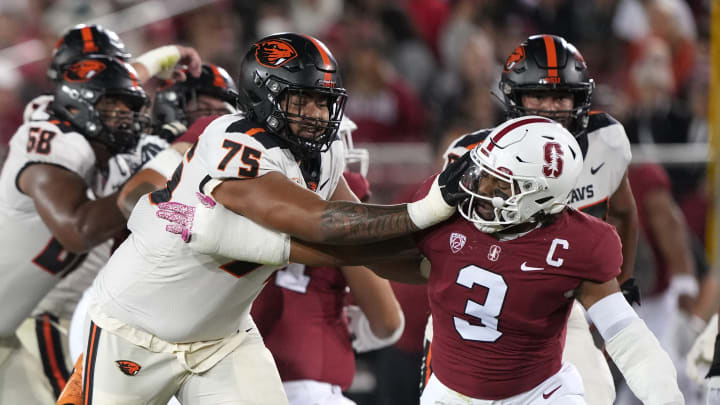Analytics Mock Draft: Who Does Computer Model Pick For Jets?

In this story:
Spinning the NFL Mock Draft wheel for the New York Jets' first-round pick will likely land you in one of two position groups. Either a pass catcher to help quarterback Aaron Rodgers create explosive plays or an offensive lineman to help keep him upright.
At No. 10, New York seems destined, by how dire these needs are and of the talent in this draft class, to add offensive help. While other teams near the Jets may be able to pivot to defense or entertain the option of taking a second-tier quarterback prospect, essentially every mock draft one finds has pigeonholed New York.
That isn’t inherently wrong or uncreative. Those making mock drafts are trying to tell the future, and if that’s where the information leads, so be it. But what about taking it out of our mortal hands and asking a model who to pick?
Cynthia Frelund’s mock drafts work a little differently than the norm. Her model takes into account free agency and prospect projections to find the maximum increases in next season’s win total. For example, if a quarterback isn’t going to start as a rookie, it will likely fall further than the Quarterback Industrial Complex would suggest.
With that said, Frelund’s model falls in line with what many analysts are projecting. She has New York taking Oregon State Beavers offensive tackle Taliese Fuaga.
“I think my model has a crush on Fuaga,” Frelund wrote. “I checked three times, and his center of gravity percentage (how often he stays balanced through contact) ranks No. 1 among all right tackles in the run game in a five-season sample. There’s a lot to like in pass pro, too. I’m guessing Aaron Rodgers would approve of this pick.”
It makes sense that an immediate starter at right tackle – a position the Jets desperately need to address – would have a large impact on the team’s 2024 success. The model likes Fuaga perhaps a bit more than the media, locking the selection in.
For context, the consensus top three receivers in the class (Marvin Harrison Jr., Malik Nabers, and Rome Odunze) were already taken, as well as the top two tackles (Joe Alt and Olu Fashanu). Georgia tight end Brock Bowers, a popular New York target, was taken 15th overall by the Indianapolis Colts.
Woody Blames Zach, But Owner's 'Budgetary Constraints' Led to Jets' QB Mess
Frelund’s model happens to align with recent trends at No. 10, but taking different attacks at a mock draft is a worthwhile exercise that could make fans question their priors about the NFL Draft.
